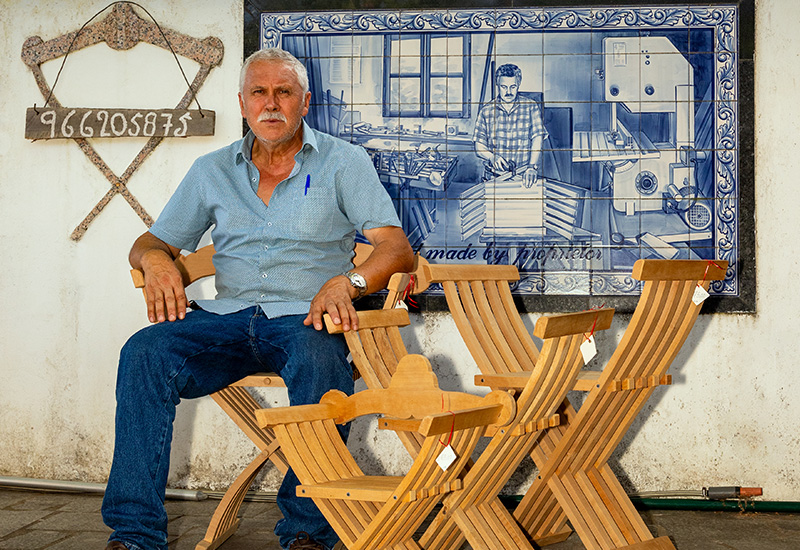The scissor chair, also known as the X-chair, has been an icon of Monchique since the Romans introduced them to this area over 16 centuries ago. However, one local artisan has been striving to preserve this ancient craft through his love for woodwork for over 35 years.
Senhor Manuel Alexandre has called Monchique home for 63 years. First and foremost, a carpenter, he worked for a local timber yard before branching off to make his own creations from wood to accommodate the foreign interest in Algarvian handicrafts.
With his extensive knowledge of carpentry, Senhor Alexandre established Casa de Alexandre in Monchique during the mid-1980s, serving as his workshop and handicrafts studio along with a cafe for local clientele. Keeping tradition alive, Senhor Alexandre specialises predominantly in crafting the traditional scissor chair or cadeira de tesoura, which gains its name from the way the chairs fold in a criss-cross action, resembling a pair of scissors.
Sitting on the terrace outside his craft shop overlooking the picturesque vista of the Serra de Monchique, Senhor Alexandre told me that the most basic chair takes around one day to produce, while more elaborate designs can take up to two or three days of intricate labour. Each chair is crafted from Portuguese elm (Ulmus minor mill) due to its flexibility and resilience. Originally, the chairs were made from alder (Alnus glutinosa), a lightwood which is found in abundance along the banks of the rivers which flow throughout the Serra de Monchique. At one time, craftsmen would buy alder wood from the land owners and transport the logs by horse or mule, but nowadays, probably due to the protective area of the Monchique mountain reserve, the wood is sourced from other nearby localities.
As tourists found their way to the hilltop village, taking in the outstanding beauty of the area, business flourished so much that Sr. Alexandre would take up a second residence along the main strip at Praia da Rocha, which is now in its 25th year, thus bringing his creations further into the tourist hub.
Once the chair of magistrates and nobles during the Roman Empire, these simple yet beautiful stools have become a popular souvenir for tourists looking for a unique addition to their home. The design of these folding chairs allows for easy transport, just as was intended centuries ago, but as Senhor Alexandre explained, over the years, with scissor chair craftsman in decline, and the added problem of baggage weight limits imposed by airlines, these typical souvenirs are slowly disappearing. However, this hasn’t stopped one of Monchique’s last remaining scissor chair crafters from carrying on and producing these local works of art, which have graced living rooms and city halls as far back as the rule of Caesar himself.
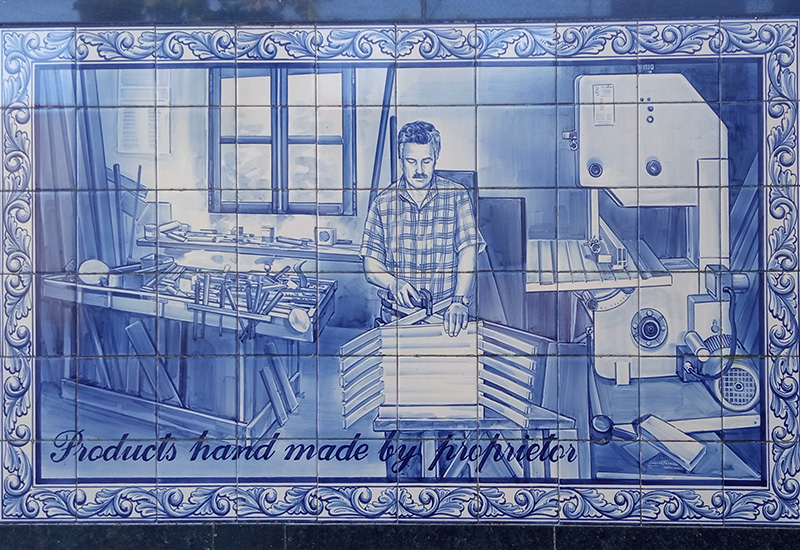
Walking through the shelved aisles of Casa de Alexandre, full of chairs, pottery and copper medronho stills, I note that Sr. Alexandre’s expertise isn’t just limited to scissor chairs but also scissor tables. Similar in design, they make the perfect fold-out table for any garden, each inlaid with glass and varnished to protect against the strong Algarvian sun, and are displayed with quirky banknotes from around the world. Senhor Alexandre’s abilities do not stop at handicrafts; even the tables and chairs in his cafe were made by his own fair hands. A fine tribute to this very talented woodworker.
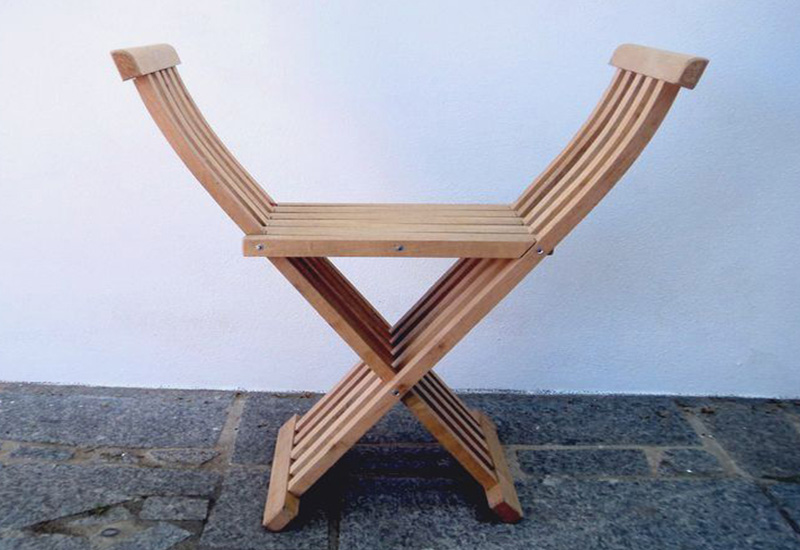
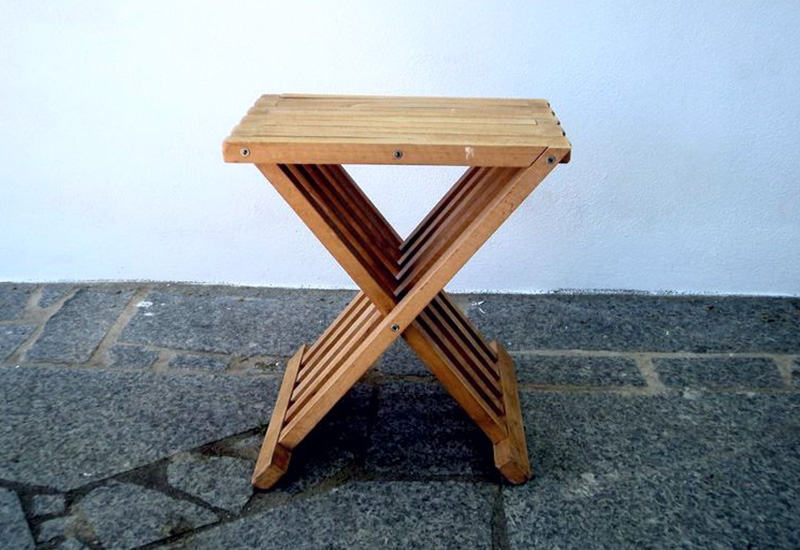
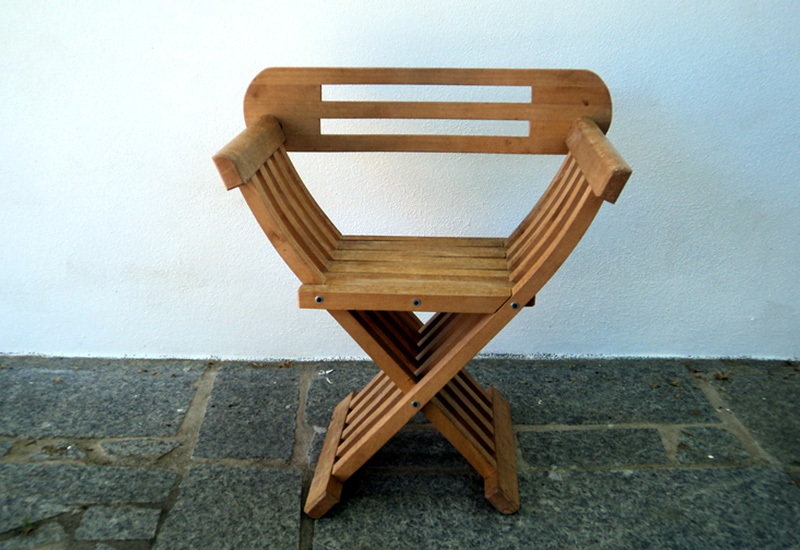
Senhor Alexandre explained the difference between the traditional chairs and those which are much more contemporary in appearance. The Romanesque design is how one would imagine a Roman piece of furniture. The arched-shaped legs and oval back are similar to those which the likes of Augustus, Trajan and Caesar would have sat on in times gone by. On the other hand, its contemporary counterpart, which many in the modern day have opted for, is more angular, similar to the stereotypical film director’s chair, minus the canvas backing.
Historically speaking, the scissor chair is the descendant of the much older curule chair, popular amongst Roman emperors, European monarchs, and even Napoleon Bonaparte. These styles of chairs can be traced back to the ancient Egyptians, who are known to have placed them in burial tombs, but closer to home in Europe, the Italians spread their usage throughout the continent.
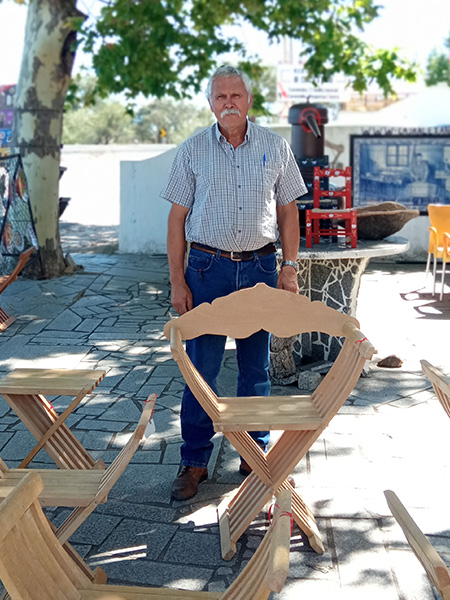
In Italian, the scissor chair is known as a Savonarola chair or Dante’s chair, while in Germany, they are called Luther’s chairs. But it was in Mons Cicus (now Monchique) where the Portuguese scissor chair, or should I say the cadeira de tesoura, was born, thus becoming the unofficial icon of Monchique.
While artisans have been in decline over the past few decades, Senhor Alexandre continues to work tirelessly to preserve this ancient tradition which has made its way into a handicraft all by itself through people’s love for history and local culture.
Senhor Alexandre’s modest attitude is that he is just doing something that he loves, while in reality, he is preserving a piece of local history almost as old as time.
Casa Alexandre, Miradouro das Caldas de Monchique, Estr. Nacional 266, Monchique
